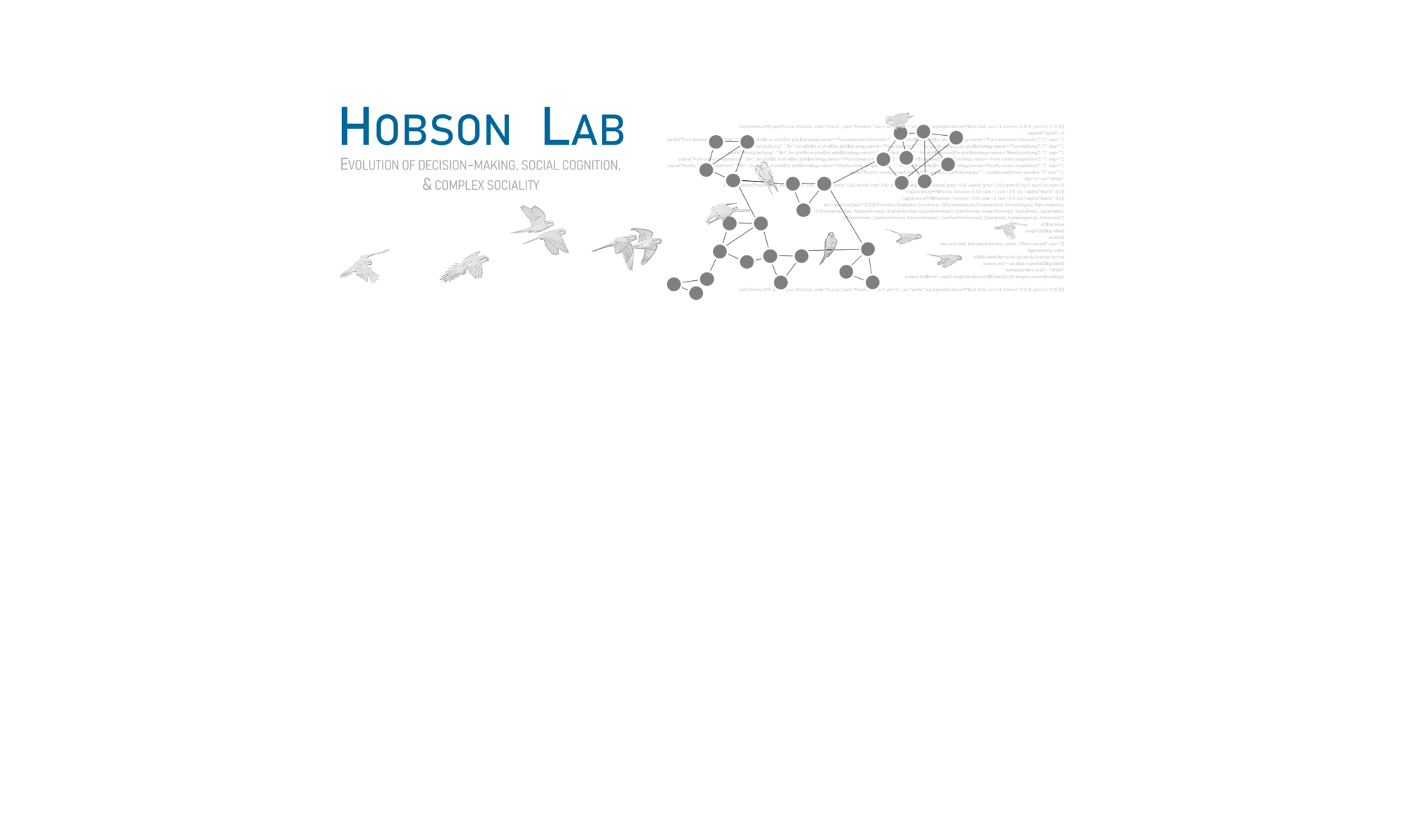I hosted a working group at the Santa Fe Institute this week on sexual selection. Emily DuVal, Courtney Fitzpatrick, Maria Servedio and I brainstormed how to tweak some existing modeling approaches to better address some of the outstanding questions in sexual selection. We beamed Maria in from North Carolina, where she unfortunately was snowed in!
Working group summary (from SFI):
Cultural transmission and the lek paradox
DECEMBER 11, 2018
Many a great nature video includes scenes of mate selection where males—often ornate and colorful—strut their good looks in hopes of striking the fancy of discerning females. This could be the peacock fanning his elaborate tail feathers or a South American manakin moonwalking on a branch, or various fish, insects, and mammals.
“Across the animal kingdom, you see a lot of species where males have exaggerated traits,” says ASU-SFI Postdoctoral Fellow Elizabeth Hobson. When mating season rolls around, males of some species gather in communal areas, or leks, where females can have their choice of mates.
It’s a phenomenon with a paradox: If females choose males with the most extreme traits, biologists would expect to see variation in those traits decrease over time. Females would then be expected to be less choosy because there would be few differences among males on which choice could be based. But that doesn’t bear out in observation of female behavior or genetic studies — females remain choosy, and variation persists. What’s more, scientists often have trouble predicting which male a female is going to choose.
In a working group at SFI December 10-14, Hobson, along with Emily DuVal (Florida State), Maria Servdio (UNC Chapel Hill), and Courtney Fitzpatrick (Indiana University), hopes to develop a model that can resolve some of the paradoxes of sexual selection.
“We think that the cognitive dynamics of mate choice could explain some of the lek paradoxes – the disconnect between the theory of how it should work, and the disconnect, empirically, with what we actually see in the wild,” says Hobson. “Understanding more about how natural selection and female mate choice interact could be really important for better understanding speciation and species evolution.”
Read more about the working group, Culturally transmitted mate preferences and the process of evolution by sexual selection





